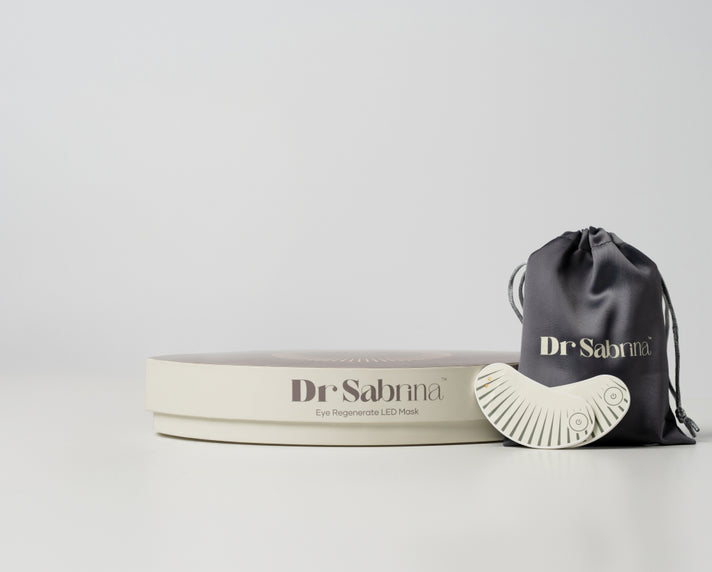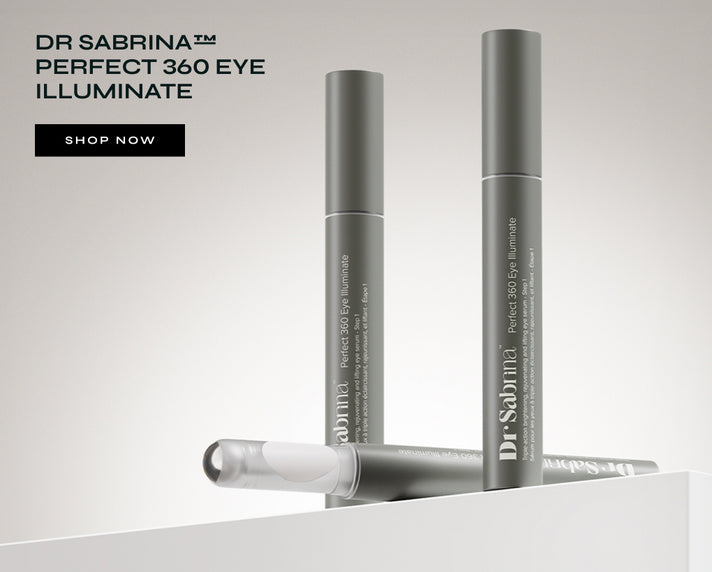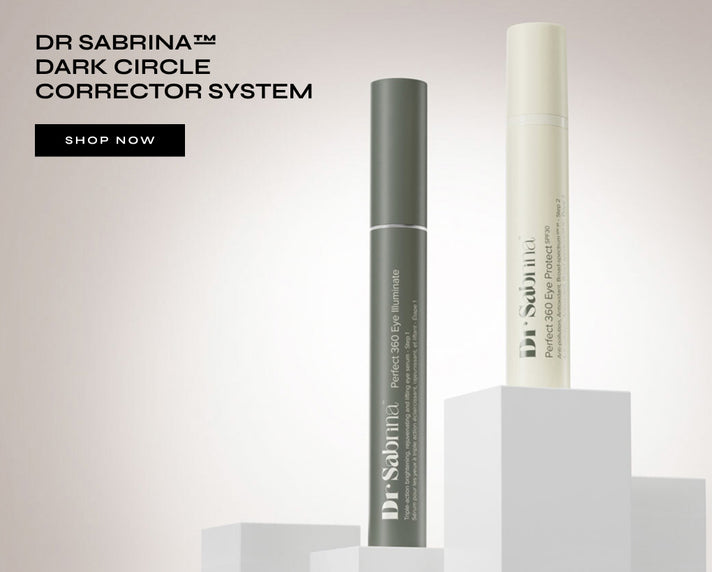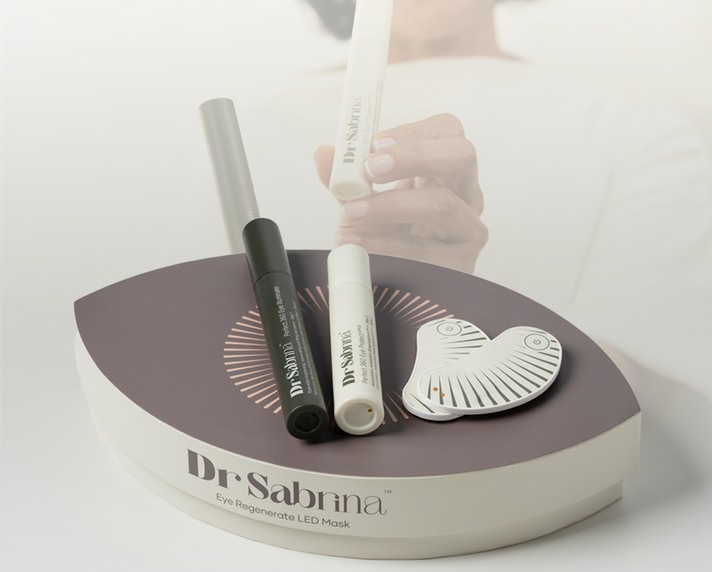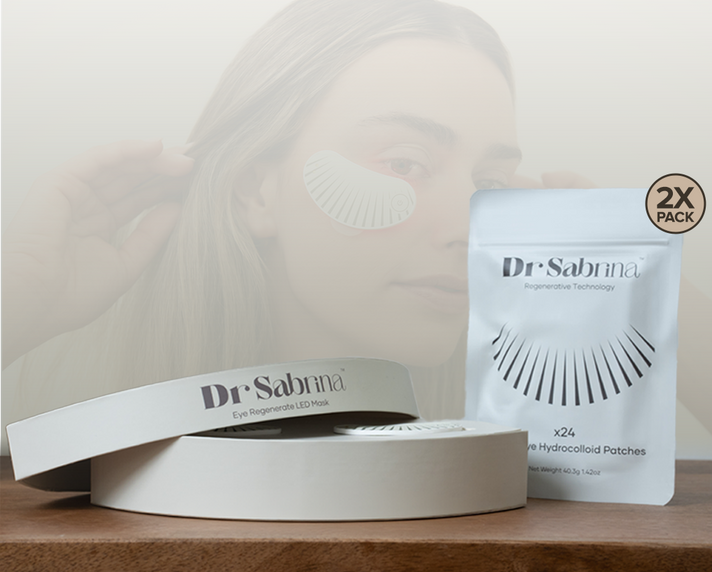Dark Circle
Understanding the Signs of Ageing Eyes: What to Look For

Have you ever noticed that your eyes don't quite see the world the same way they used to? Maybe reading small print feels like a challenge, or bright lights seem harsher than before.
You’re not imagining it; this is a standard part of getting older. In fact, over 12 million Americans aged 40 and up experience vision impairment, and that number only grows with age.
Our eyes go through a lot as time passes, showing clear signs that they’re ageing. Recognising these signs early can help you protect your vision and keep your eyes feeling fresh for years to come.
Key Signs of Ageing Eyes
Let’s dive into the specific signs of ageing eyes and examine how each symptom affects your daily life.
1. Changes in Close Vision (Presbyopia)
One of the most common signs of ageing eyes is presbyopia, the gradual loss of your eyes’ ability to focus on nearby objects. This typically becomes noticeable in your early to mid-40s. Suddenly, reading or doing close-up work becomes more challenging, and you may find yourself squinting or holding objects farther from your face to see them clearly.
For many people, this is the stage when they begin to explore an anti-ageing skin care routine that also includes habits to protect eye health.
2. Increase in Glare and Light Sensitivity
Another classic sign of ageing eyes is finding bright lights bothersome. Glare from headlights at night or sunlight on shiny surfaces may create discomfort or temporary fuzzy vision. The lens inside the eye can become less clear and scattered, making glare worse and disturbing clear vision at night or in environments with bright artificial lights.
3. Trouble Distinguishing Colours
With ageing and eyes, your ability to distinguish between similar colour shades, especially blues and blacks, starts to decline. This subtle change is a result of the lens inside the eye yellowing over time, making it harder for certain wavelengths of light to pass through at their original strength.
4. Needing More Light to See Clearly
Those small restaurant menus or dimly lit reading corners aren’t as friendly to ageing eyes. As you grow older, you’ll notice you need more light to read or do close work, a direct impact of changes within the eye’s lens and muscles. Upgrading the lighting at home can be a simple but effective solution.
5. Dryness and Eye Discomfort
Reduced tear production is a hallmark sign of ageing eyes. In fact, dry eyes are not only uncomfortable but also common for people over 65. Your eyes may sting, burn, or feel gritty. Paradoxically, excessive tearing can also occur, as the eye attempts to compensate for dryness by producing more tears in response to irritation.
Maintaining a dedicated eye care routine with soothing drops and lifestyle adjustments can make a significant difference in reducing this discomfort.
6. Eye Floaters and Flashes
Floaters, those little spots or cobweb-like shapes drifting across your field of vision, may become more common as you age. While occasional floaters are normal, a sudden increase coupled with flashes of light could be a warning sign for a more serious issue like retinal detachment, which requires prompt medical attention.
7. Loss of Peripheral Vision
As part of age-related eye problems, you may experience a gradual loss of side vision. This can be an early sign of glaucoma, a group of eye diseases that damage the optic nerve. Since glaucoma is often silent until substantial damage has occurred, regular eye checks are crucial.
8. Difficulty Adapting to Changes in Lighting
Older adults may find it takes longer for their vision to adjust when moving between well-lit and darker environments. This delay is due to changes in the eye’s ability to regulate the size of the pupil and the clarity of the lens, making it harder to transition from daylight to darkness and vice versa.
9. Blurry or Distorted Vision (Age-Related Macular Degeneration)
Macular degeneration affects the part of your retina responsible for sharp central vision. Straight lines may appear wavy, or you might develop a dim or empty area in the centre of your vision. This is among the leading causes of vision loss in older adults.
10. Cataracts and Cloudy Vision
Cataracts form when proteins in the eye’s lens clump together, clouding your vision. They are one of the most prominent eye problems with age, eventually requiring simple surgical intervention for most people. Common symptoms include fading colours, halos around lights, and blurry images.
|
Don’t let dark circles and tired eyes steal your spark any longer. Give Dr Sabrina™ Dark Circle Corrector System a try today and see the difference because your eyes deserve to look as energetic and youthful as you feel. Take the step now and wake up to brighter, refreshed eyes every day! |
How to Recognise Trouble Early
Early detection is key to managing ageing eyes. Make note of:
- Sudden changes in vision
- Persistent eye pain
- Flashes of light or a sudden increase in floaters
- Noticeable distortion of straight lines
- Any of these could signal a condition that requires immediate attention.
Why Do Eye Problems Increase With Age?
Ageing and eyes are tightly linked. Each decade, changes accelerate:
- The lens stiffens and yellows, blurring and dimming vision
- Tear production falls, causing discomfort
- Retinal and optic nerve health deteriorate, raising risks for diseases like glaucoma and macular degeneration.
It’s not uncommon for those seeking information on how to reverse ageing eyesight to also enquire about lifestyle habits, nutrition, and medical innovations that can slow or even partly reverse signs of ageing eyes.
Easy Habit Change to Prevent Eye Ageing

- Daily SPF designed specifically for the eye area
- Hydrating & antioxidant-rich eye serum
- Red light LED eye mask weekly
-
Nutrition that supports collagen & skin health
-
Reset well and have healthy life balance
-
Wear your sunglasses with UV protection
-
Reduce processed food and sugar
- Quit smoking or vaping
Lifestyle Factors and Vision Changes With Age
The relationship between vision changes with age and overall health is strong. Lifestyle modifications can slow the signs of ageing eyes:
- Stay Hydrated: Healthy hydration helps maintain tear production and eye comfort.
- Eat a Balanced Diet: Foods rich in vitamin A, omega-3 fatty acids, and antioxidants support eye health.
- Wear UV Protection: Sunglasses help prevent UV-induced damage that accelerates cataracts and macular degeneration.
- Don’t Smoke: Smoking significantly raises the risk of every age-related eye disease.
- Manage Chronic Conditions: Control of diabetes and hypertension reduces risk for severe eye complications.
Alongside these healthy habits, people often look for targeted products to shop dark circle corrector solutions that support brighter, younger-looking eyes while improving overall confidence.
How to Reverse Ageing Eyesight: What Works?
While you can’t fully reverse every age-related change, you can take steps to keep your eyes as healthy as possible:
- Regular comprehensive eye exams
- Nutritional supplementation, if prescribed by your doctor
- Use of quality artificial tears for dryness
- Medical or surgical intervention for conditions like cataracts, glaucoma, or macular degeneration
Advancements in medicine mean those with age-related eye issues now have many options for treatment and prevention. But nothing replaces the effectiveness of consistent eye care and early detection.
Eye Care Tips to Slow the Signs of Ageing Eyes
Building good habits is the best defence against common eye problems with age. Consider the following:
- Take Frequent Breaks: Use the 20-20-20 rule every 20 minutes, look at something 20 feet away for 20 seconds.
- Adjust Lighting: Bright, focused light for close work and reading supports ageing eyes.
- Maintain Eye Hygiene: Gently wash eyelids to remove allergens, dust, or debris.
- Blink Often: Especially important for those who spend long hours in front of screens.
When to See a Doctor
If you notice sudden vision loss, severe eye pain, or rapid changes in your ability to see, seek medical care promptly. Routine eye exams every 1-2 years for those over 40 can spot issues early on, giving you the best shot at maintaining strong, clear vision for years to come.
Conclusion: Protecting Your Vision for Life
The signs of ageing eyes present challenges, but knowledge is your strongest tool. Routine eye care, healthy lifestyle choices, and using targeted solutions like Dr Sabrina™ can help you see clearly and look your best for many years to come.
If you keep an eye out for the early signs of ageing eyes and act quickly, you’ll be giving yourself the best chance at a lifetime of healthy vision.
FAQs
What are the earliest signs of ageing eyes?
The earliest signs usually include difficulty focusing on close objects (presbyopia), needing more light to read, and dry, irritated eyes. You might also notice increased sensitivity to glare and slower adjustment to changes in lighting.
2. Can lifestyle changes help with eye problems as we age
Yes. Eating a diet rich in antioxidants and omega-3s, staying hydrated, wearing sunglasses to block UV rays, quitting smoking, and managing chronic conditions like diabetes can all help slow down many age-related eye problems.
3. Are there ways to reverse ageing eyesight?
While you can’t fully reverse the natural ageing of eyes, you can manage many symptoms effectively. Options include prescription glasses or contacts, proper nutrition, eye drops for dryness, and treatments or surgery for conditions like cataracts and glaucoma.
4. How often should adults get their eyes checked?
Adults over 40 should have an eye exam every 2-4 years, increasing to every 1-3 years after age 55. More frequent visits may be needed if you have health conditions or notice vision changes.
5. What serious eye conditions become more common with age?
Common serious conditions include cataracts, glaucoma, age-related macular degeneration (AMD), and diabetic retinopathy. Regular eye exams help catch these early when treatment is most effective.



